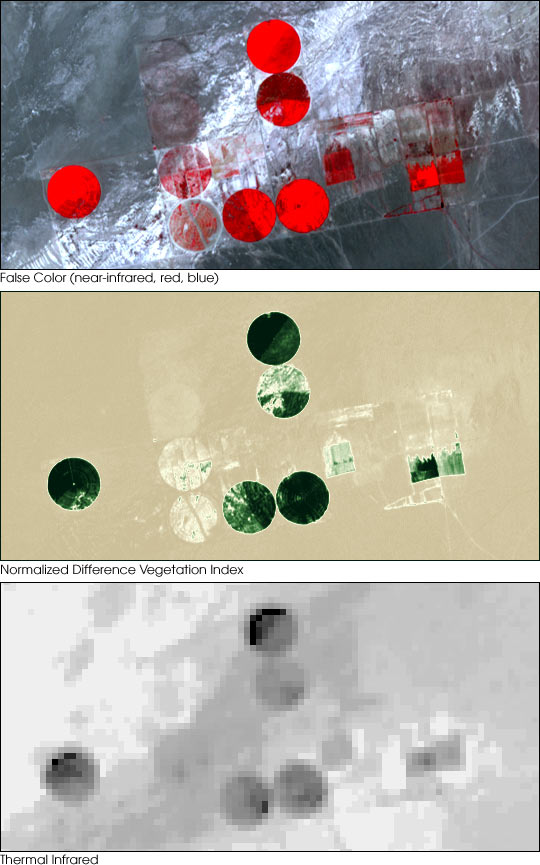


These Advanced Spaceborne Thermal Emission and Reflection Radiometer (ASTER) images cover an area of 8 x 4 km in Railroad Valley, NV, and were acquired August 17, 2001. The top image shows center-pivot irrigated fields, with healthy vegetation in red. The middle image displays the Normalized Difference Vegetation Index (NDVI), a calculated quantity that portrays the amount of vegetation. (To learn more about NDVI, read: Measuring Vegetation) The color code shows highest vegetation content in dark green, low vegetation cover in light green and pale yellow, and barren areas in light brown. The bottom image is a thermal infrared channel, with warmer temperatures in white, and colder in black. In the thermal image, the northern-most and western-most fields are markedly colder on their northwest areas, even though no differences are seen in the visible image or the NDVI image. This can be attributed to the presence of excess water, which can lead to crop damage. The combination of information from different bands is a powerful tool to monitor crop health and maintenance procedures.
Image courtesy NASA/GSFC/MITI/ERSDAC/JAROS, and U.S./Japan ASTER Science Team